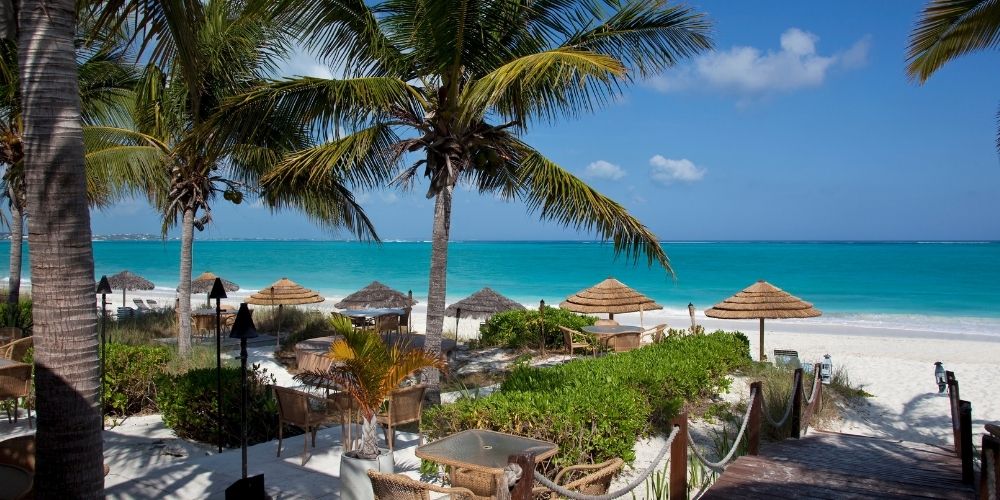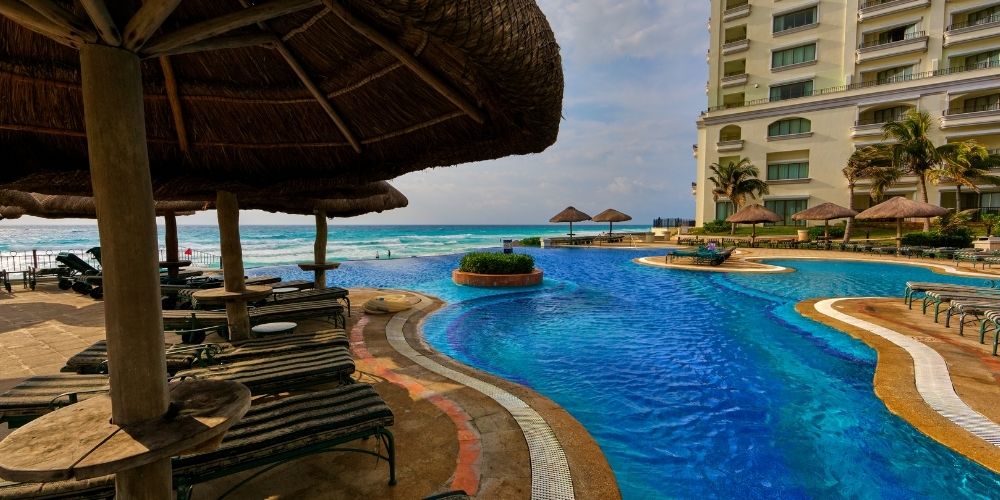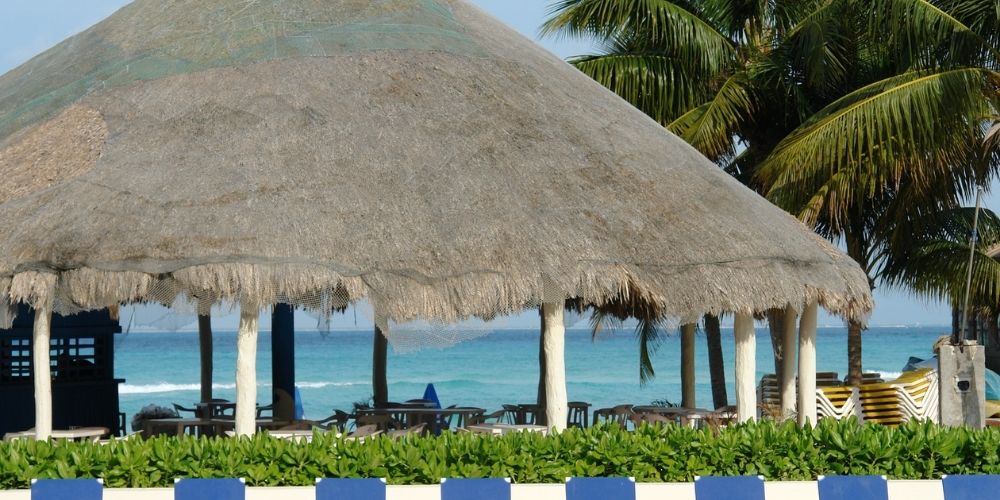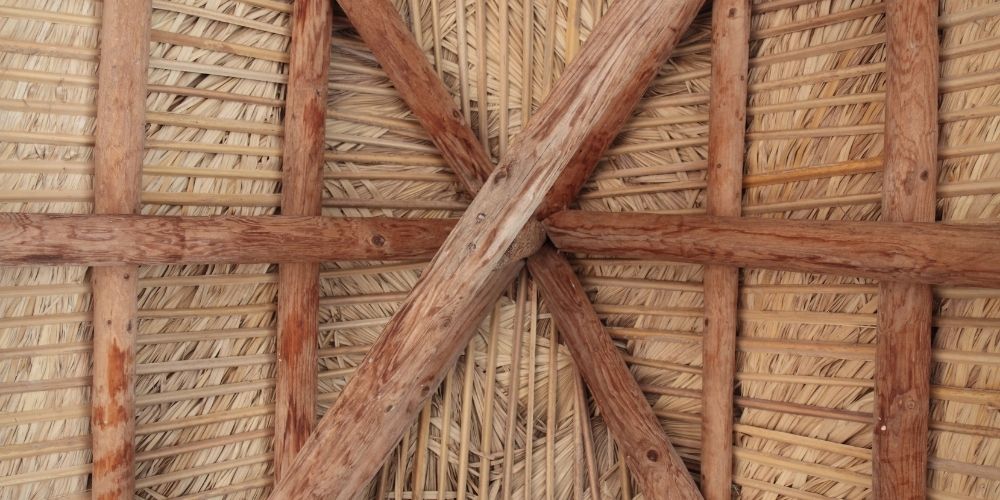Wondering what it takes to have a fantastic and long-lasting tiki hut restaurant for your business? Today we’ll share with you all the secrets behind a good design for your restaurant huts!
What Are Tiki Huts Made Out Of?
Tiki huts, or thatched roofs, mainly consist of treated, high-quality palm leaves with a robust wood frame. Some of the most prevalent options used for the palm fronds include Mexican, Tahitian, and even synthetic thatch.
When it comes to its frame, they usually come from round pine wood.
Many business owners tend to hesitate in getting these structures for their hotel restaurants. After all, they can seem like the perfect spot for bugs and birds to nest in. However, with proper care and by having a professional contractor install your tiki roof, you won’t need to worry about this sort of issue ever rising.
Top Reasons to Have a Tiki Hut Restaurant for Your Business

Just like the lobby and bedrooms, restaurants play an essential role in hotels and resorts. By providing that catering service to guests, you ensure that they leave with a fantastic experience of their stay.
Nevertheless, a restaurant isn’t only the food that it offers. It’s also the environment given by the physical establishment.
So, if you wish to bring an exotic and fun feature to your resort, there’s no better way to do so than by having a tiki hut as your main restaurant.
These are the 4 main reasons resorts have tiki hut restaurants:
- They bring a tropical appeal to the place.
- Thatched huts can endure harsh storms.
- They provide a fresh and shaded spot for customers to relax.
- Tiki hut restaurants offer business owners versatility in their designs.
Is a Tiki Hut and a Tiki Bar the Same?

Many business owners tend to wonder if it’s best to count on a tiki hut restaurant or a bar, while others wonder if they’re the same thing. That’s why we want to clarify this prevalent doubt.
Long story short, the main difference between tiki bars and huts is that the first one often comes with a built-in bar. Besides that, they are both personalized outdoor structures that consist primarily of wood and palm-thatched roofs.
On the other hand, huts and tiki umbrellas do vary.
Tiki umbrellas are to provide shade in smaller areas. Moreover, they only count on one middle post. This post is a bamboo pole in most cases.
Contrarily to umbrellas, both tiki and chickee huts have four or more pillars for the roof.
All of these thatched roof options come with weather-resistant palms.
What Are the Best Designs for a Tiki Hut Restaurant?

Just like your average hut, there are multiple designs for tiki hut restaurants at your disposal.
When opting for a tiki hut restaurant, keep these designs in mind:
- Square tiki huts
- Rectangular thatched hut restaurants
- Trapezoid huts
- Huts with incorporated tiki bar grills
- Poolside tiki huts
- Tiki hut restaurants with thatched umbrellas for nearby tables
Additionally, be sure to check out the different styles of tiki thatch that these huts offer. Some of the most popular include palm leaf, Tahitian, and African Cape Reed.
Tips to Have in Mind When Getting a Tiki Restaurant
Of course, if you wish to get the best out of your thatched-roof restaurant, there you must know the main pointers that’ll ensure an efficient and safe spot for your guests.
Here are some tips to follow when having these huts at your business:
- Consider your thatch options.
- Be sure to keep in mind the huts’ posts.
- Avoid placing natural thatch near pools.
- Plan the inside area of the hut.
- Leave paving projects last.
- Install electrical wiring systems beforehand.
Consider Your Thatch Options
Although most thatch options provide nearly the same benefits, choosing suitable palm leaves is essential to match your establishment. For instance, if you wish to transmit tropical vibes from your place, then you should select a Mexican rain cape. On the other hand, you can go for Sabal palm fronds if you wish to acquire an authentic look for your tiki hut.
Be Sure to Keep in Mind the Huts’ Posts
Along with choosing the right palm leaves for your huts, you must also consider the placement of the posts. Be sure to go over with your contractor throughout the whole process and let him know that you wish the posts to blend with the surroundings.
Avoid Placing Natural Thatch Near Pools
If you wish to avoid constant cleaning of your pool, then it’s best to avoid using natural thatch materials near the pool. These leaves tend to fall into the pool, requiring you to clean your pool multiple times during the day.
Plan the Inside Area of the Hut
Planning out the area inside your tiki hut will help you know if the tables and chairs will fit them efficiently. As a result, you’ll make your guests feel comfortable when being at the establishment. Make sure to consider the placement for special events as well.
Leave Paving Projects Last
It’s a rule of thumb to install paving and pool decks last. By doing so, you’ll achieve that polished look every resort owner loves.
Install Electrical Wiring Systems Beforehand
Lastly, installing electrical systems before thatch materials help hide them. Not only that, but it’ll help you get better lighting and outlet placement.
Steps to Follow That’ll Make Your Tiki Roofs Last

Lastly, if you wish to have a thatched-roof restaurant, business owners must know the basics to extend its lifespan.
Generally speaking, tiki huts last between 7 and 10 years. Nevertheless, you must take proper care of its thatched roof to avoid any type of problems.
For instance, one of the best things you can do when having a tiki hut is installing mesh netting. That way, you’ll keep both rodents and birds away.
Lastly, be sure to fireproof your tiki restaurant.
Remember to count on a professional by your side when getting a tiki hut for your business. You can rely on Sunshine Tiki Huts to get the fantastic, thatched roofs for your commercial property at an affordable price!

